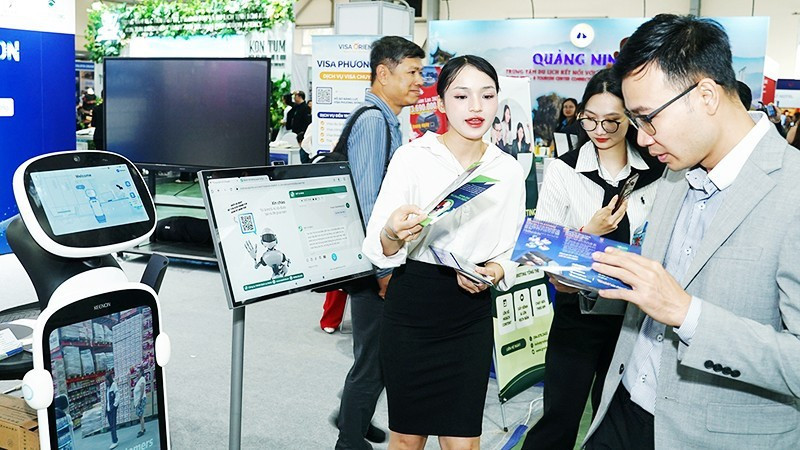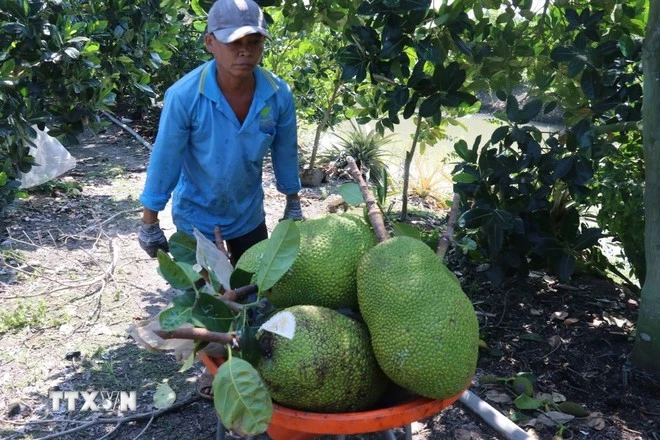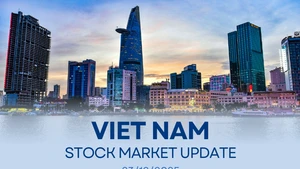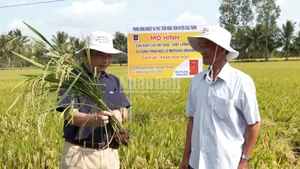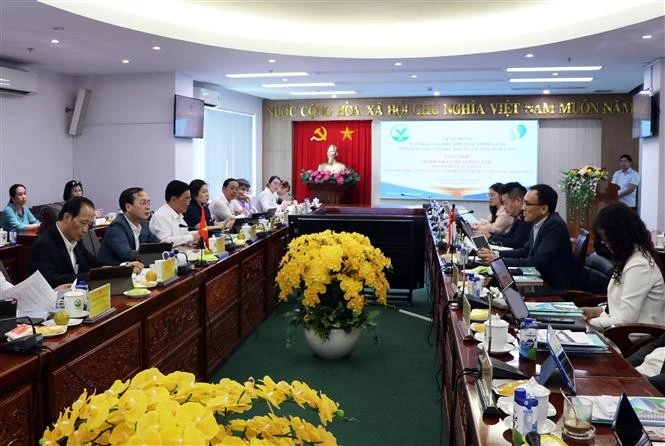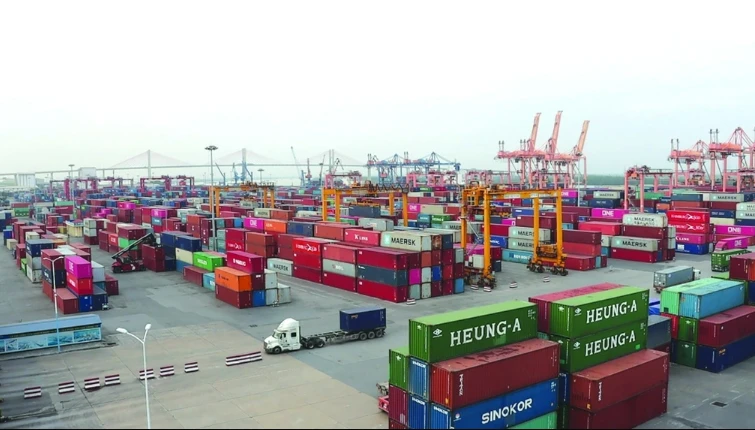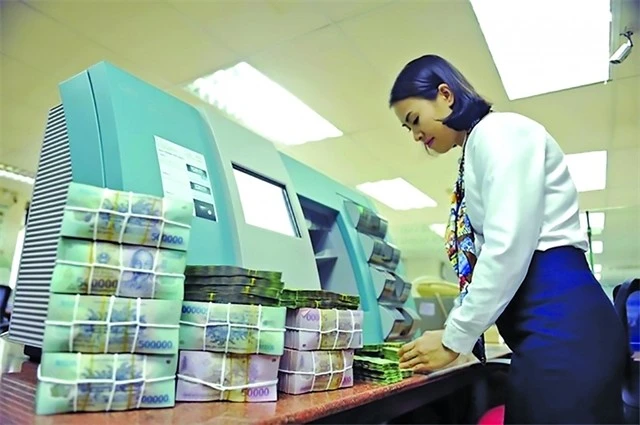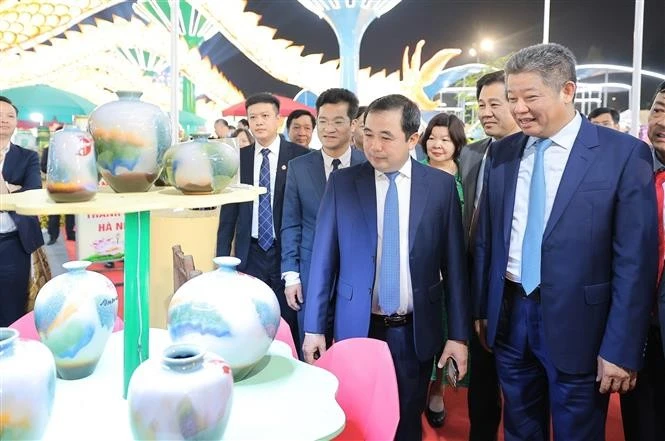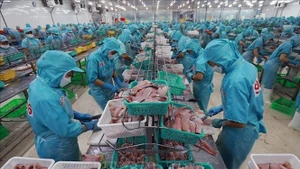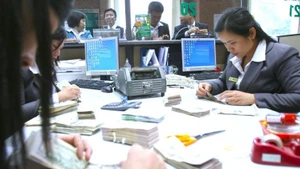A remarkable rebound
According to the National Statistics Office under the Ministry of Finance, Viet Nam’s socio-economic performance in Q3 and the first nine months of 2025 has yielded encouraging results. Gross Domestic Product (GDP) in Q3 rose by 8.23% year-on-year, with cumulative growth reaching 7.85%.
Reflecting on these figures, Dr Nguyen Quoc Viet, a public policy expert at the University of Economics, Viet Nam National University – Ha Noi, noted that amid global volatility and challenges, Viet Nam’s economy has grown “against the tide”, rebounding strongly after a difficult period. This affirms the effectiveness of government strategies and policies aimed at rapid growth alongside macroeconomic stability.
Earlier concerns were raised about the potential negative impact of reciprocal tariffs imposed by the US in Q3 and Q4, which many feared would dampen production and exports.
However, the reality proved more optimistic. Industrial production indices and the Purchasing Managers’ Index (PMI) for September rebounded to 50.4 points, up from a low of 45 in April.
Amid global volatility and challenges, Viet Nam’s economy has grown “against the tide”, rebounding strongly after a difficult period. This affirms the effectiveness of government strategies and policies aimed at rapid growth alongside macroeconomic stability.
Dr Nguyen Quoc Viet
By September, Viet Nam’s export-import turnover had doubled compared to April, with the trade surplus quadrupling over the same period.
Another positive sign is the rising number of newly registered enterprises and increased total social investment, indicating a gradual restoration of market confidence. Both foreign and domestic investments are thriving, energising sectors linked to exports, public investment, and credit.
Public investment remains a key driver, supporting the growth of various industries and domestic enterprises. Tax revenue reached nearly 100% of the annual target within just nine months, primarily driven by domestic sources—clear evidence of the domestic sector’s stable recovery.
Nguyen Thi Huong, Director General of the National Statistics Office, observed that Viet Nam’s economy is actively embracing new growth drivers. The digital economy and innovation are flourishing across sectors such as e-commerce, finance and banking, logistics, and public administration.
E-commerce retail sales in 2025 have shown notable progress, bolstered by the adoption of AI, Fintech, and Edtech—opening up new growth sectors and opportunities.
The green economy and renewable energy are also emerging as critical growth engines. The global shift in supply chains presents opportunities to attract high-quality foreign direct investment (FDI). In the first nine months of 2025, numerous major projects in renewable energy and high-tech sectors were licensed, helping Viet Nam move closer to its Net Zero target by 2050.
Institutional and business environment reforms have been accelerated through new legal frameworks, offering clearer pathways for real estate and investment, enhancing transparency, and reducing legal risks. These efforts are attracting more private capital and FDI, while Viet Nam’s standing in international rankings continues to improve, bolstering investor confidence.
Realising the year-end goal for 2025
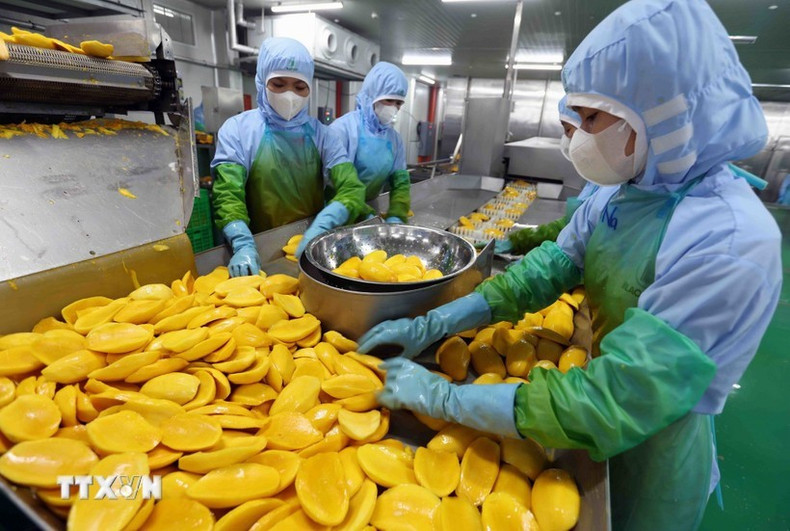
Achieving the year-end growth target remains challenging, particularly amid weak external demand and increasingly stringent protective barriers and technical standards. These developments may slow order finalisation, extend compliance timelines, and directly impact industries reliant on imported raw materials unless swift adaptation occurs.
Exchange rate fluctuations and international capital movements during year-end balance adjustments could raise costs for importing raw materials and equipment, as well as for servicing foreign currency debt. Domestic enterprises continue to face pressure from elevated financial costs, a lack of long-term orders, and exchange rate risks.
From Q4 2025, reciprocal tariffs from the US will impose additional taxes on Vietnamese goods, increasing compliance costs. Businesses will need to renegotiate prices, delay order finalisation, narrow profit margins, and potentially shift markets. Production strategies will need to adapt, focusing on increasing domestic input sources, enhancing traceability, and improving inventory and delivery planning.
Climate change, natural disasters, and epidemics may disrupt agricultural production and domestic supply chains. Extreme weather and the storm season pose risks of local supply chain breakdowns, delaying construction and deliveries.
According to the Director General of the National Statistics Office, to meet the 8% annual growth target, Viet Nam’s economy must grow by approximately 8.4% in Q4 2025—the highest quarterly rate since 2011.
Achieving and surpassing this target will require decisive leadership, coordinated action, and exceptional effort from the entire political system, relevant sectors, and the business community.
Strategic solutions for long-term growth
Dr Can Van Luc, Chief Economist at the Bank for Investment and Development of Viet Nam (BIDV), recommends five key solutions to support long-term growth.

First, attention must be paid on operationalising the two-tier local government model. While some localities have taken proactive steps, others continue to face challenges. Government support and hands-on guidance are needed to streamline administrative procedures. Simultaneously, digital infrastructure should be accelerated to transform administrative processes into electronic systems.
Second, it’s vital to sustaining growth drivers. Despite a 20% tariff imposed by the US in August, exports, investment, and consumption have slowed but still increased. These pillars must be preserved—particularly exports—by helping businesses navigate tariff barriers and supply chain disruptions.
Public, private, and FDI investments have recently grown by around 8%, with FDI expected to rise by 15–17% this year. Sustaining this momentum requires improving the investment climate by simplifying procedures, reducing administrative burdens, shortening approval times, and enhancing transparency. The Prime Minister has mandated the removal of at least 30% of administrative procedures. Effective implementation would foster a more conducive environment for both public and private investment.
Nominal retail sales have increased by over 9%, but real growth—adjusted for inflation—is around 7–8%, still below pre-pandemic levels. Policies should aim to stimulate genuine consumer demand, such as revising Personal Income Tax laws to increase disposable income, stabilising employment, and adopting flexible yet prudent fiscal policies.
Third, developing a healthy real estate market. Although the market has recovered, signs of overheating and rising prices suggest potential risks of bubbles. Immediate measures are needed to manage these risks and promote sustainable development.
Fourth, maintaining macroeconomic stability. High growth must be accompanied by macroeconomic stability through coordinated monetary, fiscal, and pricing policies—especially as the year ends. Stable macro conditions are essential for both economic growth and social welfare.
Finally, further support should be provided to enterprises and business households. Targeted and practical policies should be introduced to assist enterprises and business households, ensuring they remain resilient and competitive.
Dr Can Van Luc concluded that comprehensive and decisive implementation of these solutions will not only help Viet Nam achieve its 2025 growth target but also lay a solid foundation for sustained economic development in the years ahead.
